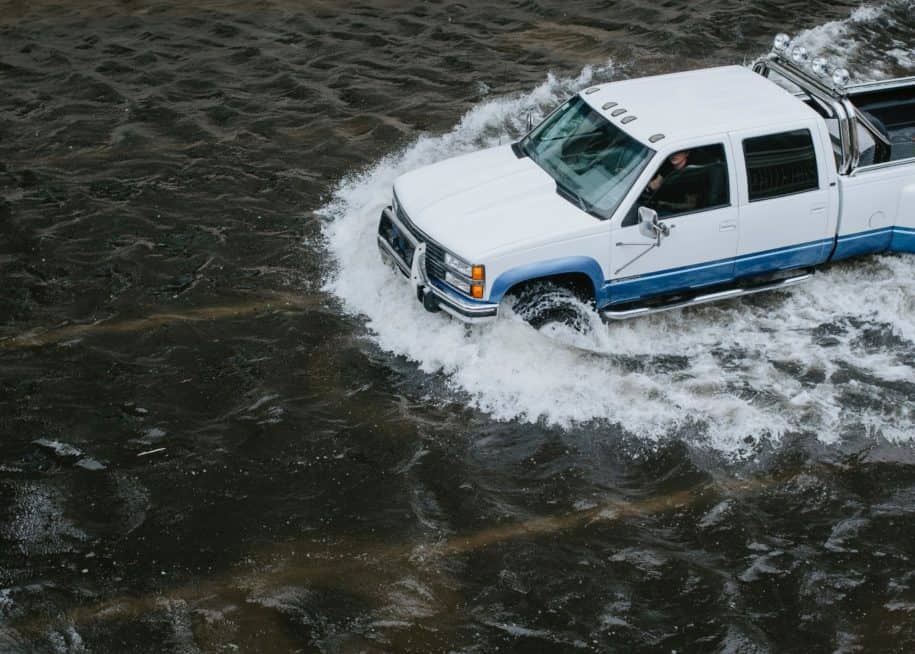Sea level rise poses a threat to civilization that can no longer be ignored. Businesses, however big or small, are at risk because of this phenomenon. Our previous article delved into sea level rise and how entire regions sink. We also discussed what expert projections tell us under a do-nothing scenario and reviewed the current condition of parts of the world where the effects of rising sea levels are the most severe. This article will continue exploring this topic, with a specific focus on the repercussions to business.
What does sea level rise mean for business?
1. Power and water outages.
The utility sector is critical for day-to-day business operations. In the US, nearly a hundred electrical facilities are located within 4 feet of high tide. The proximity of these power plants and substations to the coast makes the businesses dependent on their energy extremely vulnerable to outages caused by storm surges. As we have experienced several times in recent years, storm surges can bring down entire communities by destroying critical infrastructure, leaving them without power and water for at least several days. Hurricane Sandy, which battered parts of New York and New Jersey in October 2012, caused more than 8 million customers to be without power for days. The extensive flooding that came from Sandy damaged infrastructure and halted business operations, costing the economy $63 billion. $8 billion of that amount was attributed to sea level rise. The latest US National Ocean Service report predicts that sea level rise will lead to higher storm surge heights and more inland flooding. The document particularly cites the dramatic increase in exposure and vulnerability of critical energy infrastructures.
2. Loss of customers.
Apart from hurricanes, coastal cities grapple with frequent flooding due to high tides, an issue that is exacerbated by sea level rise. Sunny-day flooding (the colloquial term for flooding due to high tides) is becoming more frequent in US coastal cities such as Miami Beach, Florida, and Annapolis, Maryland. The US Office of Coastal Management points out that the duration of sunny-day flooding episodes has increased by 11-fold since the year 2000. The agency also projects that by 2030, the frequency of sunny-day flooding will double the observed rate of two decades ago. The increasingly high frequency and longevity of sunny-day flooding decreases the demand from small, local businesses with single shop fronts that get cut off by the flooding. A 2017 Stanford study found that businesses in downtown Annapolis in Maryland lost 1.7% of foot traffic due to sunny-day flooding. This translates to a $129,000 loss from annual revenue. The study additionally cautioned that a 1-foot further sea level rise would result in an even more drastic hit of 24% fewer visitors.
3. Damage to infrastructure and supply chain disruption.
In recently released sea level rise data, experts have essentially put “move-out dates” on different parts of the world. This means the displacement of millions of people and the inundation of infrastructures that have taken decades to build. Highways, railways, airports, and seaports located along coastlines are susceptible to flooding, which would result in even more disruption to global supply chains than we have seen from the events of the past couple of years.
A recent analysis for Climate Risk Management categorized 1,238 airports worldwide to be in low-elevation coastal zones, making them more exposed to the effects of sea level rise. Airports are usually constructed in very flat, low-lying areas (such as wetlands or reclaimed land) to minimize collisions during take-off and landing. Since these coastal airports are usually logistical hubs for global supply chains, by 2100 it is predicted that 10-20% of all air routes will be at risk of disruption due to rising sea levels. Seaports—which handle more than 80% of global trade volume and serve as the foundation of global supply chains—are also in danger. Periodic flooding and permanent inundation of port facilities will cause operational delays and damage to port infrastructure. In addition, sea level rise will amplify the effects of storm surges and storm tides. A 2022 study by the Environmental Defense Fund estimates that by 2050, the annual cost from sea level rise and stronger storms damaging port infrastructure and disrupting operations will be $2.9-$9.8 billion. This figure is expected to balloon to $25.3 billion by 2100 if no action is taken. Given the importance of the timely deliveries of goods and raw materials for businesses, disruptions to these operations will translate to additional economic costs downstream.
The three main business threats from rising sea levels are power and water outages, the loss of customers, and increasing damage to infrastructure leading to supply chain disruption. The outcome of these adverse events can amount to losses of billions of dollars. Without urgent action, businesses also face the risk of permanent relocation or closure in the coming years. In the next article, we’ll delve into short and long-term measures that businesses can take to keep themselves afloat.
Author Bio
The SafetyStratus Research Advisory Group (RAG) brings together thought leaders from the global environmental, health, and safety community to promote best practices and provide key insights in the profession and the industries they serve. The Research Advisory Group also advocates, where practical, the intersection of and advances with the use of technology, such as the SafetyStratus enterprise EHS software platform. Group membership consists of representatives from across varied disciplines and market sectors as well as select members of the SafetyStratus team.
The primary objectives of the SafetyStratus RAG partnership are to:
- Build a strategic partnership between EHS practitioners and the SafetyStratus team.
- Provide engaging and practical content to the global EHS community.
- Provide discipline and market feedback specific to SafetyStratus products and services.
While the objectives of the RAG are varied, the primary public-facing outcome will be available through engaging and practical content found on the SafetyStratus resource pages. Various articles, papers, and other valuable resources will be produced and shared as part of an ongoing effort to cultivate a robust community. Ultimately, the SafetyStratus RAG will expand to have a broader reach and provide opportunities for more inclusion by all interested EHS professionals in a collaborative community environment.
References
Bryant, D. (2014). How Utilities Can Protect the Grid against Potential Outages Due to Extreme Weather Events. Electric Energy Online. Retrieved 24 May 2022, from https://electricenergyonline.com/energy/magazine/804/article/How-Utilities-Can-Protect-the-Grid-against-Potential-Outages-Due-to-Extreme-Weather-Events.htm.
Davis, M., & Clemmer, S. (2014). Power Failure How Climate Change Puts Our Electricity at Risk— and What We Can Do. Union of Concerned Scientists. Retrieved from https://www.ucsusa.org/sites/default/files/2019-10/Power-Failure-How-Climate-Change-Puts-Our-Electricity-at-Risk-and-What-We-Can-Do.pdf
Environmental Defense Fund. (2022). Act Now or Pay Later: The Costs of Climate Inaction for Ports and Shipping. Research Triangle Park, North Carolina: Environmental Defense Fund. Retrieved from https://www.edf.org/sites/default/files/press-releases/RTI-EDF%20Act%20Now%20or%20Pay%20Later%20Climate%20Impact%20Shipping.pdf
High Tide Flooding. Coast.noaa.gov. (2021). Retrieved 24 May 2022, from https://coast.noaa.gov/states/fast-facts/recurrent-tidal-flooding.html.
Hino, M., Belanger, S., Field, C., Davies, A., & Mach, K. (2019). High-tide flooding disrupts local economic activity. Science Advances, 5(2). https://doi.org/10.1126/sciadv.aau2736
National Oceanic and Atmospheric Administration. (2022). Global and Regional Sea Level Rise Scenarios for the United States. Silver Spring, Maryland: National Oceanic and Atmospheric Administration. Retrieved from https://oceanservice.noaa.gov/hazards/sealevelrise/noaa-nos-techrpt01-global-regional-SLR-scenarios-US.pdf
Strauss, B., Orton, P., Bittermann, K., Buchanan, M., Gilford, D., & Kopp, R. et al. (2021). Economic damages from Hurricane Sandy attributable to sea level rise caused by anthropogenic climate change. Nature Communications, 12(1). https://doi.org/10.1038/s41467-021-22838-1
Yesudian, A., & Dawson, R. (2021). Global analysis of sea level rise risk to airports. Climate Risk Management, 31, 100266. https://doi.org/10.1016/j.crm.2020.100266



